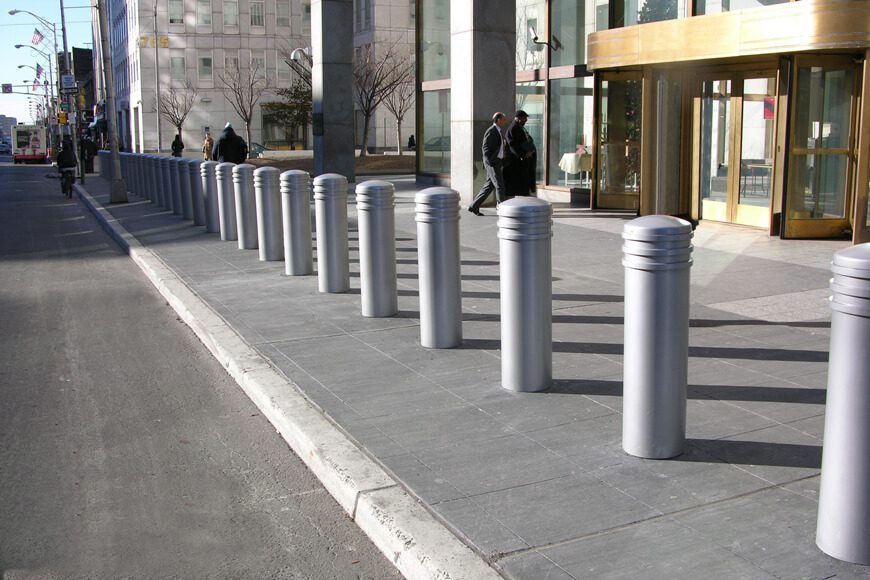When it comes to urban planning and security, the implementation of traffic management systems is key for maintaining order on our roads and in public spaces. Removable bollards have emerged as a key component within this discipline, offering a versatile solution to control vehicle and pedestrian flow. Their importance is underlined by an increasing need to adapt urban terrains for both safety and accessibility, thus making their application a major topic in the industry.
This article aims to provide insight into the often underappreciated engineering that goes into the design and operation of removable bollards. By examining the detailed aspects of their structure, installation, and maintenance, we uncover the subtle challenges that make these devices more than just metal poles in the ground. Our unique perspective not only showcases how removable bollards function but also emphasizes their role in seamlessly integrating security measures with the daily ebb and flow of city life.
Design and Construction
In crafting removable bollards, careful attention is given to the selection of robust materials that can endure daily wear and potential vehicular impacts. The favored choices for this purpose are typically steel or concrete, known for their sturdiness and resilience. The design process involves creating a bollard that is not only strong but also user-friendly in terms of its installation and removal capabilities.
Manufacturers often incorporate sophisticated yet operationally straightforward locking mechanisms, which play a vital role in stabilizing the bollards while they are in position. These mechanisms are designed with the dual purpose of preventing unauthorized removal but also allowing authorized personnel to remove them quickly when necessary. Consequently, the overall construction of removable bollards requires a carefully balanced consideration between durability, ease of use, and security, ensuring that they serve their intended purpose without causing undue burden for those responsible for their management.
Installation Process
To properly install removable bollards, a thorough and strategic process is required—one that begins with precisely digging holes where the bollards will be positioned. Careful measurement is important to ensure each hole aligns with the intended bollard placement, providing both the necessary depth and width to support the structure. Once the holes are prepared, the bollards are inserted and set in place, often with the aid of a temporary guide to maintain their alignment.
The securing phase follows, typically involving the pouring of concrete to anchor the bollards stably. Alternatively, some installations might use a locking mechanism that can fix the bollard to a prefabricated receiver below ground level. While concrete is a common choice due to its strong endurance once set, it also provides enough firmness to keep the bollards stationary amid various conditions. This installation method ensures that while the bollards are firmly fixed, they maintain the ability to be repositioned or removed should the occasion demand—for instance, to adapt to changing traffic flows or for certain events, highlighting the practical and flexible nature of these traffic management solutions.
Functionality and Use
Removable bollards serve an essential function in the dynamic setting of urban management, providing a robust solution for controlling vehicle access in various settings like parking lots, pedestrian zones, and spaces designated for events. These sturdy posts are engineered to be detachable without the need for cumbersome equipment, facilitating swift alterations to traffic patterns and security measures. Their utility is particularly evident during special occasions or in response to emergent situations where temporary vehicle restriction or pathway clearance is necessary.
Far from being permanent obstacles, these removable bollards offer strategic flexibility and can be swiftly unfastened and stored, restoring the flow of traffic or accommodating emergency access when the situation warrants it. This malleable approach to space management highlights the bollards’ indispensable role in both routine and exceptional urban scenarios, striking a balance between secure boundaries and adaptable public areas.
Maintenance and Durability
Ensuring removable bollards maintain their functional integrity over time requires a routine of regular maintenance and attention to detail. Such upkeep not only keeps the bollards operational but also lengthens their service life considerably. These robust barriers are designed to withstand both strong impacts from vehicles and severe weather conditions. Despite their sturdy construction, the subtle aspects of their mechanical parts—such as locking mechanisms—may degrade due to the constant use or exposure. Regular inspections are essential to identify and rectify any minor problems before they become major issues.
During these examinations, professionals look for signs of corrosion, structural damage, or compromised locking systems, all of which could potentially impair the bollards’ effectiveness. If repairs or part replacements are necessary, they are done without delay to ensure that the bollards remain dependable. By adopting such preventative strategies, facility managers can greatly enhance the longevity of removable bollards.
Advantages and Considerations
When integrating removable bollards into traffic and security plans, the substantial benefits they bring—especially their flexibility—make them an attractive option for urban environments. Their design allows for not only managing vehicle and pedestrian traffic but also for implementing temporary access control measures necessary during special events or in response to emergencies. This can be particularly invaluable in areas where permanent bollards would be impractical due to changing needs or space usage requirements.
Still, the strategic placement of these bollards is key to ensure they fulfill their purpose. Installation sites must be chosen with a clear understanding of traffic patterns, pedestrian flow, and security needs to ensure that, when activated, the bollards contribute positively to the intended objectives. Likewise, their deployment should be anticipated in the early stages of urban planning to avoid suboptimal utilizations that could potentially compromise safety or accessibility. Ultimately, when chosen wisely and integrated effectively, removable bollards can serve as a testament to the ingenuity of modern urban safety and facilitation—offering a blend of durability and adaptability that is hard to rival.
In conclusion, this article has highlighted the importance of removable bollards as versatile components in traffic management and urban safety. From the selection of durable materials in design and construction to the precise methods of installation, each step plays a key role in their functionality. We’ve discussed how their ease of removal adds value in providing flexible solutions for temporary closures and access restrictions, and the necessity of regular maintenance for their longevity. The advantages of removable bollards, such as adaptability, security, and efficient space management, further accentuate their importance.





























